A world of difference: Addressing the global need for radiation oncology systems
Images
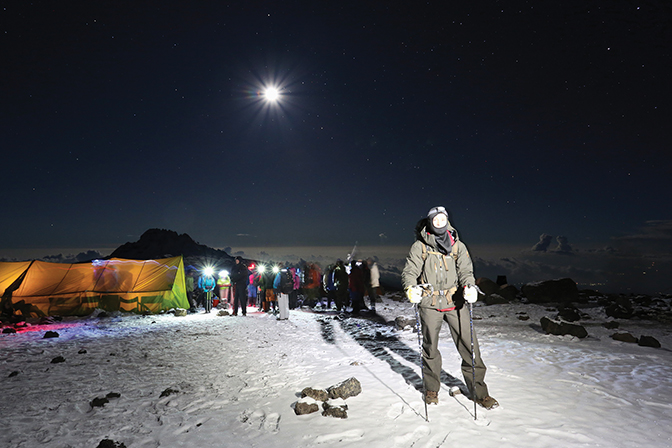

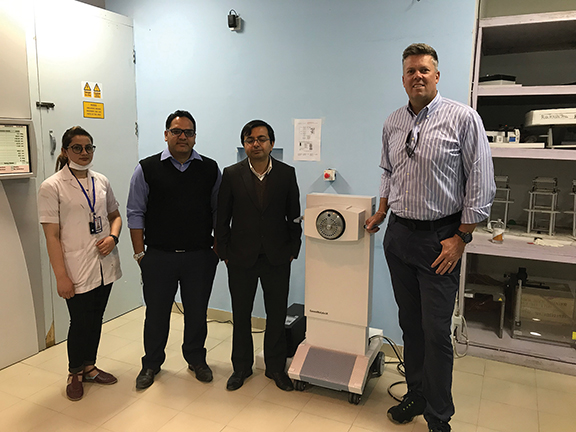
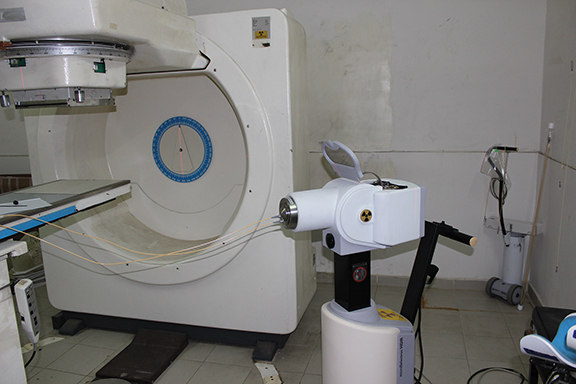
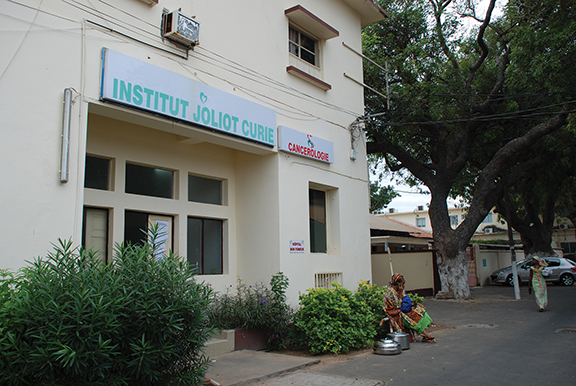
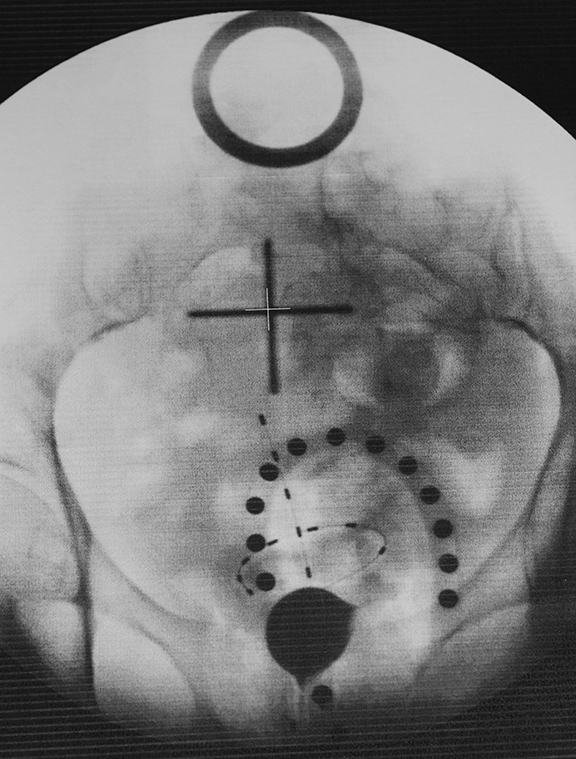
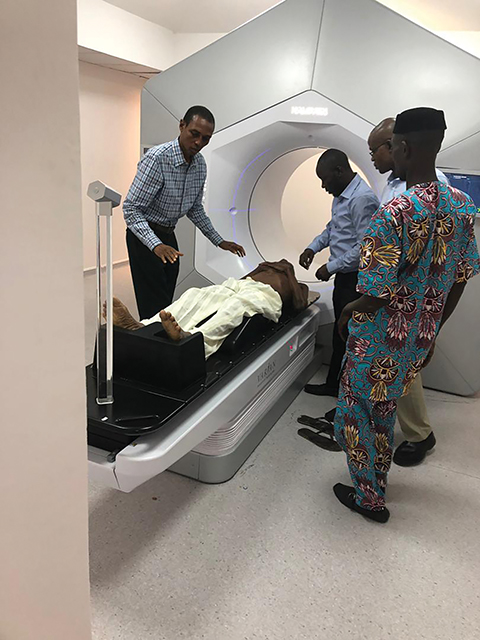
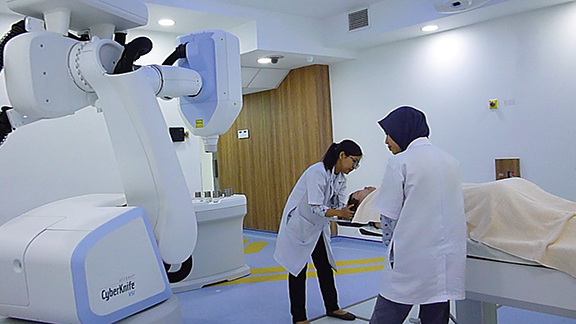
According to the World Health Organization (WHO), approximately 70% of cancer deaths occur in low- and middle-income countries (LMIC).1 However, less than 30% of low-income countries have treatment services and only 26% have pathology resources.1 On top of that, only 20% of LMICs have the data needed to drive cancer policy.1 This disparity results in late-stage detection of cancer or worse, as well as inaccessible diagnosis and treatment.
“There is a tremendous lack of access to radiation oncology services in developing countries,” says Larry Daugherty, MD, a radiation oncologist at Alaska Cancer Treatment Center in Anchorage, Iditarod musher, and co-founder of RadiatingHope, a nonprofit charitable organization dedicated to improving radiation oncology care around the globe (Figures 1A-B).
RadiatingHope around the world
RadiatingHope raises funds through donations, mountain climbing and prayer flags—an idea that spawned while Dr. Daugherty and co-founder Brandon Fisher, MD, a radiation oncologist with Gamma West Cancer Services in Ogden, Utah, were medical students. As they were scaling mountains and carrying prayer flags for patients, they realized they could raise money for RT in developing countries through these efforts. Given that 50% to 60% of all cancer patients can benefit from radiation therapy (RT),2 the impact of securing RT equipment for LMIC residents would be enormous.
Today, funds from these efforts pay to refurbish and install older RT systems. On a recent climb on Kilimanjaro, for instance, more than $50,000 was raised in a single expedition.
John Einck, MD, president of RadiatingHope and a professor of Radiation Medicine and Applied Sciences at the University of California San Diego School of Medicine and co-chair of its brachytherapy program, says the organization provides high dose rate (HDR) brachytherapy, linear accelerators and other equipment to countries in need.
“There was a realization that in the US, facilities are getting rid of radiation oncology systems that we think are end of life but could be refurbished and repurposed for use in areas of the world where they don’t have this equipment,” says Dr. Einck.
Tanzania, for example, has two functioning RT systems for its 45 million people. In contrast, the US has on average one system per 100,000 citizens.
Since its inception, RadiatingHope has donated and installed dozens of machines in 13 different countries, including linacs in Honduras and Tanzania, and HDR brachytherapy units in Ghana, Senegal and Nepal (Figure 2).
Funding the refurbishment and installation of donated systems is only part of the challenge, however. Sustainability and its many layers of education, training and perseverance is also essential.
“We can’t install a machine and be done,” says Dr. Einck. “We need to first create a sustainable system, including a partner on the ground that can perform quality assurance for safety and perform the necessary maintenance.”
In some cases, equipment has been donated to areas that weren’t fully ready. But fortunately, success stories outnumber failed attempts. In one case, already stretched oncologists at a site in Senegal were working long hours and often lacked time to perform brachytherapy procedures. RadiatingHope helped install a linear accelerator and HDR brachytherapy system so they could treat their nation’s biggest cancer killer, cervical cancer.
Another success story was in Nepal, where a ground-up approach became the framework for results. “This was a cancer center organically created by an amazing oncologist who believed in and desperately wanted to elevate care,” says Dr. Daugherty. “He was ready to accept new technology in a modern cancer center. However, they didn’t have reliable electricity or adequately trained staff. So we accomplished one hurdle at a time and a developed a model that we can scale to other places.”
Most interestingly, he adds, is that the linac is powered by a diesel generator—something engineers said was impossible. This story fuels the optimism that, even with limited resources, RadiatingHope can help revolutionize RT in developing countries and aid local oncologists in saving tens of thousands of lives.
Battling brain drain
Qualified staff and education pose another challenge, due in part to a “brain drain” over the last few decades, whereby the best and brightest leave to pursue education in a developed country only to never come back. To address this problem, RadiatingHope has created centers of excellence in LMICs so physicians and staff can learn—and ideally remain—in their native country. The model has been used successfully in Sweden to keep radiation oncology clinicians in northern rural regions.
“The general consensus is that it is the lack of people with the knowledge on how to use these systems—the radiation oncologist, dosimetrist, physicist, nurse—that is the key challenge we face,” says Derek Brown, PhD, director of the UCSD Radiation Oncology Learning Center, Program Director of the Medical Physics Residency Program, and associate professor at UCSD who is involved with RadiatingHope and i.treatsafely.
i.treatsafely provides access to high-quality and practical learning videos to improve quality and safety in radiation therapy. The nonprofit organization initially held one- to two-day workshops in different countries; however, this proved an inefficient means of maximizing outreach. The organization turned to YouTube and now provides free access to 300-plus videos. About half of the users are outside of North America and Europe, notes Dr. Brown.
ASTRO, ARRO address educational needs
To further address education and training, the American Society for Radiation Oncology (ASTRO) and the Association of Residents in Radiation Oncology (ARRO), the resident section of ASTRO, formed a Global Health Initiative that includes a Global Health Scholars program. Samuel Marcrom, MD, a resident at the University of Alabama at Birmingham, is vice chair of ARRO’s Executive Committee and co-chair of the Global Health Subcommittee.
“Beyond equipment, we need people who know how to use the equipment and can stay informed of the latest advances,” Dr. Marcrom says. “Through our mentorship program (Global Health Mutual Mentorship Program), radiation oncology trainees in other countries can learn from trainees in the US, and vice versa.”
While radiation oncology is in its infancy regarding global health compared to some other fields, fortunately it can glean lessons from their experiences.
“We are trying to learn from the history of other disciplines such as infectious disease,” Dr. Marcrom explains. “It is possible to think you know the needs of other people and regions and be completely wrong.”
He advocates a needs assessment that includes organizations and residents, and evaluates what type of education or changes the local people need and are amenable to. “Then we can intervene and help,” he says. “Cookie cutter education materials will not work in every country every time.”
The ARRO Global Health Initiative and RadiatingHope have also worked with Rayos Contra Cancer, or Rays Against Cancer, which is committed to expanding access to radiation oncology through education, training, research and collaboration, beginning in Latin America. An official partner of Project ECHO (Extension for Community Healthcare Outcomes) based out of the University of New Mexico School of Medicine, Rayos Contra Cancer uses a hub-and-spoke, knowledge-sharing network model to pair experts around the world with clinics that lack radiation oncology education and training.
By also addressing financial limitations, Serguei Castaneda, MD, a resident at Drexel University College of Medicine, co-chair of ARRO’s Global Health subcommittee and vice president of Rayos Contra Cancer, helped bring an HDR brachytherapy system to a cancer center in Nepal.
The case for cobalt
“Many low-income countries don’t have a healthcare system that pays for radiation oncology and that is a huge limitation to access,” says Dr. Castaneda, who was also an ARRO Global Scholar. In such cases, older cobalt systems (Figure 3A-C) can deliver a significant benefit. Consider that a modern linac requires simulation software, advanced MR and positron emission tomography/computed tomography (PET/CT) imaging, plus additional education and training for 3-dimensional (3-D) treatment plans. In contrast, with a cobalt-based therapy unit, simulation is performed on the unit, it can withstand high throughput with limited downtime, and it costs significantly less.
“They can treat more patients at a lower cost with cobalt, so it is the most efficient and cost-effective way to deliver radiation in these areas,” says Dr. Castaneda.
Adds Dr. Marcrom, “In areas where radiation access is severely limited, it is possible that treating more people with older, less complex and more reliable technology, such as cobalt, may potentially be better than treating fewer patients with more advanced equipment. It’s a tough balance, with no quick or simple solution.”
Other key challenges include lack of infrastructure, particularly electrical power. That’s why the HDR brachytherapy and cobalt radiation therapy systems are great options for areas without a stable power grid.
“An HDR unit is compact, has fewer moving parts and is less complex than a linac so it is easier to keep it operational,” says Dr. Einck. “The main drawback is the unit needs a 10-curie source made of iridium-192 and it may be hard to obtain this in some regions of the world.”
Additionally, consideration must be given to Ministry of Health decisions and goals regarding a country’s people and the resources needed to acquire, operate and sustain an advanced radiology oncology system.
Vendors respond to global RT needs
Radiation therapy system manufacturers have also made a global impact, either by collaborating with organizations such as RadiatingHope and ARRO Global Health, or through direct investment in a country.
“We are entering an era that will see the largest demand for global health needs,” says Chris Toth, president of Oncology Solutions, Varian Medical Systems, Palo Alto, California. “Communicable diseases are largely under control and people in low- to middle-income countries are living longer. While cancer today is the No. 2 killer globally, by 2030 it will be No. 1.” 3
In China, for example, estimates suggest that by 2030 the country will have more than 8 million new cancer cases each year, representing one-third of the global cancer burden. Yet, only 25 percent of the population has access to radiation oncology, says Toth.
As a sponsor of the Cancer Foundation of China, Varian provides education to hospital presidents, radiation oncologists, and residents in training. Through the foundation and associated programs, Varian hopes to increase access in medium-sized cities of 5 million plus residents so patients can limit or avoid traveling for care. Academic medical centers in China will also have free access to Varian’s oncology software solutions to use in education and training.
Additionally, in India Varian recently signed a three-year agreement with Tata Trusts, one of the country’s oldest philanthropic organizations, to install RT treatment systems as a preferred supplier. Toth estimates the agreement will reach upward of 200 linacs with a capacity to treat 250 000 patients each year. As with China, he notes that only 25 percent of Indians have access to radiation oncology services.
There may also be an opportunity to harness artificial intelligence (AI) and machine learning (ML) to deliver technology-enabled services such as high-quality treatment plans. In many clinics throughout the developing world, even if a clinician and staff can operate their radiation oncology equipment, they may lack time and expertise to develop a more advanced 3D treatment plan. Whether the solution is cloud-based or software infused with an AI or ML algorithm to guide development of the treatment plan, Toth sees an opportunity to provide planning guidance as a fee-for-service to areas throughout the world.
“We also need to cross the chasm and create more capabilities for delivering care by engineering solutions differently,” adds Toth. He points to the company’s Rapid Plan knowledge-based treatment planning that uses ML to help generate a baseline treatment plan, and the Halcyon system (Figure 4) with an intuitive user interface, standardized workflows, one-step patient setup, and ability to image and treat patients in nine steps.
A Varian RT system recently installed in Tanzania, for instance, was used to treat a 5-year-old girl with retinoblastoma, a curable cancer. Without this system, she would have not had access to treatments that saved her life.
Describing the lack of RT systems in developing countries as “a massive problem,” Ioannis Panagiotelis, chief marketing officer at Elekta (Stockholm, Sweden), says that according to the Global Task Force on Radiotherapy for Cancer Control (GTFRCC), there will be a 12 000-plus linac system gap to meet the needs of LMICs by year 2035.3 More importantly, he adds, is that 30 000 radiation oncologists, 22 000 medical physicists and 80 000 radiation technologists are needed in this same time frame.4 In fact, data compiled by the IAEA in 2013 reported that, at the time, more than 30 countries had no radiation therapy service at all.5 Elekta recently installed a system in one of these countries, Nicaragua.
The company also donated a linac to Al Bashir Hospital in Amman, Jordan, in 2018, facilitated through the International Atomic Energy Agency’s (IAEA) Programme of Action for Cancer Therapy in response to the influx of Syrian refugees. The five-year survival rate across all cancers is 46% in Jordan, compared to 86% in the US.
Elekta is also investing directly in China and in many regions of Africa, long recognizing the need for education and training in those and many other areas. After a linac sale in Algeria, for example, Elekta worked with the site to send a medical physicist to France for training, and later worked with the Ministry of Health to open an education center hub in Algeria for ongoing training needs.
In addition, Elekta has sponsored fellowship programs for the past decade to train oncologists and medical physicists to operate linear accelerators and plan more complex treatments. And in China, the company launched an RT Academy to train technologists in anticipation of the country’s growing need for cancer care.
Elekta is also establishing local offices to further support sales, training and service. “Service is a critical aspect that has been impeding progress in the past,” says Panagiotelis. Currently, the company says 80 percent of Elekta systems worldwide are connected to Elekta IntelliMax, providing securely controlled remote access for support and predictive maintenance. Plans are to soon achieve 100% connectivity.
To address power supply problems, Elekta is investigating whether other renewable sources of energy, such as solar energy, could power a linac, says Panagiotelis, noting that a prototype is undergoing testing.
At Accuray, the company has built relationships with distributors and local medical associations to address the need for systems and service in LMICs. Birgit Fleurent, chief marketing officer, says the company has collaborated with the European Society for Radiotherapy and Oncology (ESTRO) Cancer Foundation and the Union for International Cancer Control and its C/Can 2025: City Cancer Challenge, which supports cities that lead the design, planning and implementation of cancer treatment solutions.
Success, however, often relies on the country’s healthcare policy, says Fleurent. A 2017 resolution at the 70th World Health Assembly called for member states to adopt a cancer prevention and control policy that includes reducing premature mortality from noncommunicable diseases—including cancer—by one-third. Such a policy is needed for sustainable education, training, service and financing for capital equipment and healthcare funding, she says.
“It is critical that countries have a policy in place that links cancer care and radiation therapy with healthcare coverage,” she stresses. “That policy needs to start with prevention, then screening and treatment, including palliative and end-of-life care. Cancer care is a continuum and the WHO resolution for countries to implement cancer care policy is a must-have.”
Accuray has seen success in developing countries when multiple stakeholders— public and private—have come together to address the need for cancer care and the funding behind it. While the perception may be that developing countries need a low-cost “value” system, adds Fleurent, that is not necessarily true.
She notes that Accuray’s RT systems—the Radixact, TomoTherapy and CyberKnife (Figure 5)—were designed to help clinicians deliver precise and accurate radiation therapy to patients for a wide range of cancers, regardless of where they reside. It’s important, she adds, that clinicians can effectively control the cancer and minimize side effects that compromise quality of life.
“We believe, along with other vendors, that low- to middle-income countries need systems that are a workhorse and offer state-of-the art treatments for patient safety and quality of life,” she says. However, most important is patient access to all forms of cancer treatment.
“Radiation therapy is not generally used as a stand-alone,” Fleurent adds, “rather it is complementary to surgery, chemotherapy and immunotherapy. So we need to raise awareness of all viable cancer treatments.”
References
- World Health Organization. Cancer: Key Facts. https://www.who.int/news-room/fact-sheets/detail/cancer. Accessed May 28, 2019.
- Rosenblatt E, Acuña O, Abdel-Wahab M. The challenge of global radiation therapy: an IAEA perspective. Int J Radiat Oncol Biol Phys. 2015;91(4):687-689.
- Centers for Disease Control and Prevention. CDC National Health Report. Future Health of our Nation Infographic. https://www.cdc.gov/healthreport/infographics/aging/index.htm. Accessed May 28, 2019.
- Developing medical linacs for challenging regions. CernCourier, February 15, 2017. https://cerncourier.com/developing-medical-linacs-for-challenging-regions/. Accessed May 28, 2019.
- Samiei M. Challenges of making radiotherapy accessible in developing countries. Cancer Control, 2013. http://cancercontrol.info/wp-content/uploads/2014/08/cc2013_83-96-Samiei-varian-tpage-incld-T-page_2012.pdf. Accessed May 28, 2019.
Citation
MB M. A world of difference: Addressing the global need for radiation oncology systems. Appl Radiat Oncol. 2019;(2):44-48.
July 11, 2019